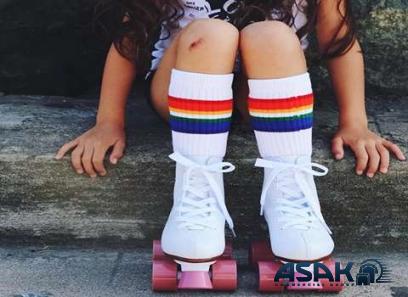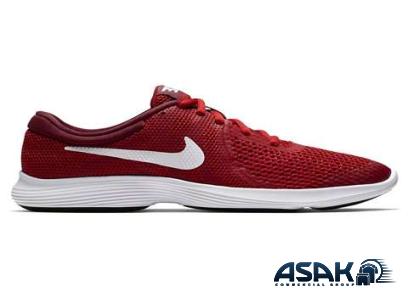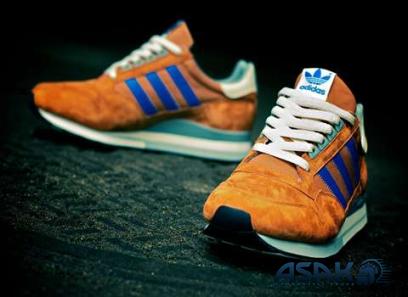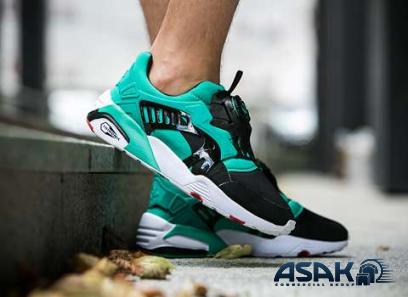The popularity of running as a fitness activity has surged in recent years, prompting a corresponding rise in the demand for running shoes. With an overwhelming number of options available in the market, finding the perfect pair can be a daunting task. However, fear not – this comprehensive guide will walk you through the key aspects to consider when selecting running shoes, ensuring you make an informed choice that maximizes both comfort and performance. 1. Understand Your Running Style: The first step is to identify your running style. Are you an experienced runner training for marathons, or a beginner working up to your first 5k? Knowing your level and purpose of running will determine the type of shoe you need.

.
 For example, neutral shoes are ideal for runners with a balanced gait, while stability shoes provide support for overpronators. 2. Consider Shoe Fit: A proper fit is crucial to avoid discomfort and potential injuries. Ensure that your shoes have a thumb’s width of space at the front to accommodate natural foot expansion while running. The heel should be snugly fit, but not too tight, to prevent blisters and slippage. Don’t be afraid to try different brands or sizes until you find the perfect fit. 3. Determine Your Arch Type: Understanding your foot’s arch type can help you select the appropriate shoe that provides the necessary support. Flat-footed individuals will benefit from shoes with motion control, while those with high arches need cushioning and flexibility.
For example, neutral shoes are ideal for runners with a balanced gait, while stability shoes provide support for overpronators. 2. Consider Shoe Fit: A proper fit is crucial to avoid discomfort and potential injuries. Ensure that your shoes have a thumb’s width of space at the front to accommodate natural foot expansion while running. The heel should be snugly fit, but not too tight, to prevent blisters and slippage. Don’t be afraid to try different brands or sizes until you find the perfect fit. 3. Determine Your Arch Type: Understanding your foot’s arch type can help you select the appropriate shoe that provides the necessary support. Flat-footed individuals will benefit from shoes with motion control, while those with high arches need cushioning and flexibility.
..
 If you have neutral or medium arches, stability shoes are suitable. 4. Consider Cushioning and Support: Running puts stress on your joints, so cushioning and support are crucial to minimize impact and prevent injury. Shoes equipped with advanced cushioning technologies, such as air or gel, provide optimal shock absorption. Additionally, look for shoes with supportive features like reinforced midsoles or heel cups for added stability and to prevent excessive pronation. 5. Choose the Right Outsole: The outsole of a running shoe plays a vital role in providing traction and durability. If you primarily run on paved surfaces, a shoe with a rubber outsole will offer reliable grip and durability. For off-road running or trail races, consider shoes with lugged soles that provide traction on uneven terrain.
If you have neutral or medium arches, stability shoes are suitable. 4. Consider Cushioning and Support: Running puts stress on your joints, so cushioning and support are crucial to minimize impact and prevent injury. Shoes equipped with advanced cushioning technologies, such as air or gel, provide optimal shock absorption. Additionally, look for shoes with supportive features like reinforced midsoles or heel cups for added stability and to prevent excessive pronation. 5. Choose the Right Outsole: The outsole of a running shoe plays a vital role in providing traction and durability. If you primarily run on paved surfaces, a shoe with a rubber outsole will offer reliable grip and durability. For off-road running or trail races, consider shoes with lugged soles that provide traction on uneven terrain.
…
 6. Weight and Breathability: The weight of running shoes can impact performance. Lighter shoes are often preferred by competitive runners seeking an extra speed boost. However, heavier shoes may provide better cushioning and support for longer distances. Additionally, opt for shoes made from breathable materials, like mesh, to increase airflow and keep your feet cool and dry during runs. Conclusion: Selecting the perfect pair of running shoes is a personal decision that requires careful consideration of factors such as running style, fit, arch type, cushioning, support, outsole, weight, and breathability. By taking the time to understand your individual needs and preferences, you can make an informed choice that enhances your running experience and helps you achieve your fitness goals. Remember, investing in quality running shoes is an investment in your well-being and performance on the track or trail.
6. Weight and Breathability: The weight of running shoes can impact performance. Lighter shoes are often preferred by competitive runners seeking an extra speed boost. However, heavier shoes may provide better cushioning and support for longer distances. Additionally, opt for shoes made from breathable materials, like mesh, to increase airflow and keep your feet cool and dry during runs. Conclusion: Selecting the perfect pair of running shoes is a personal decision that requires careful consideration of factors such as running style, fit, arch type, cushioning, support, outsole, weight, and breathability. By taking the time to understand your individual needs and preferences, you can make an informed choice that enhances your running experience and helps you achieve your fitness goals. Remember, investing in quality running shoes is an investment in your well-being and performance on the track or trail.










Your comment submitted.